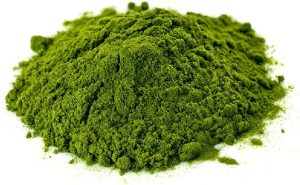
- Overview of Safflower Oil
- Brief History of Safflower Oil
- Functions of Safflower Oil
- Recommended Daily Intake (RDI), Recommended Dietary Allowance (RDA), Adequate Intake (AI), or Reference Nutrient Intake (RNI) for Safflower Oil
- Deficiency of Safflower Oil
- Food Sources of Safflower Oil and Where to Get It From
- Safflower Oil and Its Interaction with Other Medications
- Websites and Articles to Delve into the Benefits of Safflower Oil
- Disclaimer
Overview of Safflower Oil
Safflower oil, derived from the seeds of the safflower plant, is a versatile cooking oil with various potential health benefits. High in monounsaturated fats and low in saturated fats, it may contribute to heart health by lowering LDL cholesterol levels.
Additionally, safflower oil contains vitamin E, an antioxidant that helps combat oxidative stress. With a high smoke point, it is suitable for frying and cooking at higher temperatures. Some studies suggest that safflower oil may aid in weight management by promoting the reduction of abdominal fat. While it offers potential health advantages, moderation is key due to its caloric density.
As with any dietary component, individuals with specific health conditions should consult healthcare professionals before making significant changes to their diet.
Brief History of Safflower Oil
Safflower oil has a rich history dating back centuries. The safflower plant (Carthamus tinctorius) is native to the Middle East and was cultivated for its vibrant flowers, which were historically used for dyeing and medicinal purposes. The use of safflower for oil extraction likely originated in ancient civilizations, such as Egypt and Mesopotamia.
Safflower oil’s culinary and medicinal significance expanded as it spread to different regions, including India and China. By the 19th century, safflower cultivation had reached Europe and North America.
In the early 20th century, efforts to improve safflower varieties for oil production gained momentum. The development of high-linoleic acid safflower varieties, low in saturated fats, increased its appeal as a cooking oil.
Today, safflower oil is commercially produced worldwide, with the United States, Mexico, and India being major producers. It has become a popular vegetable oil choice due to its mild flavor, high smoke point, and potential health benefits, particularly its association with heart health. The evolution of safflower oil reflects both its cultural significance and its adaptation to modern culinary and health preferences.
Certainly, here’s a brief history of safflower oil presented in a table format:
| Time Period | Milestones |
|---|---|
| Ancient Times | Safflower plant cultivated for its vibrant flowers, used for dyeing and medicinal purposes in the Middle East. |
| Ancient Civilizations | Likely usage of safflower for oil extraction in civilizations like Egypt and Mesopotamia. |
| Centuries Ago | Safflower cultivation and oil usage spread to regions including India, China, and parts of Europe. |
| 19th Century | Safflower cultivation reaches North America and Europe. |
| Early 20th Century | Efforts to improve safflower varieties for oil production gain momentum. |
| Mid-20th Century | Development of high-linoleic acid safflower varieties, low in saturated fats, increases appeal as a cooking oil. |
| Present Day | Commercial production of safflower oil is global, with major producers including the United States, Mexico, and India. |
Functions of Safflower Oil
Safflower oil serves various functions, offering a range of potential health benefits:
- Heart Health:
- Safflower oil is rich in monounsaturated fats, which may contribute to cardiovascular health by reducing LDL (bad) cholesterol levels and promoting a healthy lipid profile.
- Weight Management:
- Some studies suggest that safflower oil may aid in weight management by promoting the reduction of abdominal fat.
- Antioxidant Properties:
- Safflower oil contains vitamin E, an antioxidant that helps combat oxidative stress, protecting cells from damage.
- Cooking Versatility:
- With a high smoke point, safflower oil is suitable for various cooking methods, including frying and high-temperature cooking.
- Skin Health:
- The moisturizing properties of safflower oil make it a common ingredient in skincare products, helping maintain skin hydration.
- Hair Care:
- Safflower oil can be used topically to moisturize and condition hair, potentially improving its texture and appearance.
- Inflammation Reduction:
- Some studies suggest that the linoleic acid in safflower oil may have anti-inflammatory effects, contributing to overall well-being.
- Culinary Uses:
- Safflower oil is used in various culinary applications, including salad dressings, baking, and as a cooking oil in diverse cuisines.
While safflower oil offers these potential benefits, moderation is essential due to its caloric content. As with any dietary component, individuals with specific health conditions should seek advice from healthcare professionals before making significant changes to their diet.
Recommended Daily Intake (RDI), Recommended Dietary Allowance (RDA), Adequate Intake (AI), or Reference Nutrient Intake (RNI) for Safflower Oil
Deficiency of Safflower Oil
Safflower oil itself is not an essential nutrient, and there is no recognized deficiency associated with the absence of safflower oil in the diet. It is important to note that safflower oil is a source of fats, specifically monounsaturated and polyunsaturated fats, which are components of a healthy diet. However, these fats can be obtained from various sources, and safflower oil is just one among many options.
While there is no specific deficiency of safflower oil, it’s crucial to maintain a well-balanced diet that includes a variety of fats from different sources. Essential fatty acids, such as omega-3 and omega-6 fatty acids, are crucial for overall health and cannot be synthesized by the body, so they must be obtained through the diet. Common sources of essential fatty acids include fatty fish, flaxseeds, and walnuts.
Individuals with specific dietary restrictions or health conditions should work with healthcare professionals or registered dietitians to ensure they are meeting their nutritional needs and incorporating the right balance of fats in their diet.
Food Sources of Safflower Oil and Where to Get It From
Safflower oil is primarily obtained from the seeds of the safflower plant (Carthamus tinctorius). It is a common cooking oil and is also used in various culinary applications. Here are common food sources of safflower oil:
- Cooking Oil:
- Safflower oil is widely used as a cooking oil for various culinary purposes. It has a mild flavor and a high smoke point, making it suitable for frying, sautéing, and baking.
- Salad Dressings:
- Safflower oil is often used as a base for salad dressings due to its light flavor and liquid consistency.
- Mayonnaise:
- Safflower oil is sometimes used in the production of mayonnaise as an alternative to other vegetable oils.
- Dips and Sauces:
- Safflower oil can be used in the preparation of dips, sauces, and marinades.
- Baked Goods:
- Safflower oil is occasionally used in baking recipes for cakes, muffins, and other baked goods.
When looking to incorporate safflower oil into your diet, you can find it in most grocery stores, supermarkets, or specialty food stores. It is commonly available in bottles for home use. Additionally, safflower oil may be an ingredient in various processed foods, so checking ingredient lists on food labels can help you identify products containing safflower oil.
It’s important to note that while safflower oil can be a part of a balanced diet, moderation is key due to its caloric density. Individuals with specific dietary concerns or health conditions should consult with healthcare professionals or registered dietitians for personalized advice.
Safflower Oil and Its Interaction with Other Medications
Safflower oil is generally considered safe for consumption and is a common cooking oil. However, it’s essential to note a few considerations:
- Blood Clotting Medications:
- Safflower oil contains omega-6 fatty acids, which may have mild antiplatelet effects. While there is limited evidence, it’s advisable for individuals taking blood-thinning medications (anticoagulants) to consult their healthcare provider before significantly increasing their intake of safflower oil.
- Diabetes Medications:
- Safflower oil may have a potential impact on blood sugar levels. Individuals with diabetes taking medications to manage their blood sugar should monitor their levels closely and consult with a healthcare professional if considering significant changes in their diet, including the use of safflower oil.
- Interactions with Other Fats:
- Safflower oil is rich in unsaturated fats, and if consumed in excess, it may contribute to an overall high-fat diet. Individuals with certain medical conditions, such as pancreatitis or gallbladder issues, may need to monitor their fat intake.
As with any dietary considerations, individuals taking medications or with specific health concerns should consult their healthcare providers or registered dietitians. While safflower oil is generally recognized as safe, individual responses to dietary components can vary.
Additionally, newer information or research may have emerged since my last update, so it’s advisable to seek the latest guidance from healthcare professionals.
Websites and Articles to Delve into the Benefits of Safflower Oil
Disclaimer
The information is solely provided for educational purposes. It is not intended to diagnose, treat, cure, or prevent any disease. Seek the advice of your physician or qualified healthcare provider with any questions you may have regarding a medical condition at all times. Never disregard professional medical advice because of something you have read or learned from this article.






